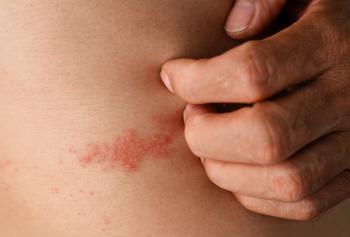
Remote Care Advancement for Heart Failure, COPD and Diabetes Patients
In this week's episode of Tuning In to the C-Suite podcast, MHE's Briana Contreras spoke with Dr. Rob Kowal, chief medical officer of the Cardiac Rhythm and Heart Failure division at Medtronic. The two discussed how remote monitoring and IoT is changing healthcare and how remote technology is also gaining a wide-spread adoption to monitor patients at home who have chronic conditions like heart failure, chronic obstructive pulmonary disease and diabetes.
To listen to more episodes featured on Tuning Into The C-Suite, visit us on
Below is an excerpt Q&A from conversation with Rob:
Q: So now in your field of healthcare, how do you see remote monitoring and IoT advancing?
A: Yeah, so I think to get to the advancing part, we need to take a little step back to frame everyone. So, you know, pacemakers have been around for 60 years. And one of the really cool things about them is they're dynamic, right? You can program them and change them. And the second thing is they collect information about themselves, how they're performing, and the patient they're in. And so through the years, there's been this need to interact with the device. So years and years ago, the interaction would have been, ironically, sticking a needle into the chest to put into the device and turn to change it.
That quickly went away, fortunately, to programmers that could interact. That's evolved through the years to sophisticated programmers, and then remote monitoring. So now we actually have some patients, we have programmers that are not just our own proprietary programmers, but we use a tablet-based consumer tablet as our platform. So that has huge advantages for the ability to to scale and leverage all the benefits of how those tablets work.
We can also now not only have monitors at a patient's bedside that automatically do that interaction with the device, but we've even shifted through Bluetooth signals coming from the device to have a secure connection between a patient their device and their iPhone to transmit that information.
Q: So obviously, this is just to reach patients faster or track something quicker?
A: Exactly, exactly. So again, it used to be that a patient would have to come into the office every three to six months. And you, you could check the device and if there was a surprise waiting for you, you had to deal with it. Now, what's amazing is within minutes, two hours, if there's something going on with the patient or the device, the office can know about it and act on it and contact the patient and set up the next, you know, change of care plan if need be.
Q: Why is remote tech gaining more adoption for patients who have chronic conditions like heart failure, COPD and diabetes?
A: This represents kind of the shift, right? Initially, remote monitoring was being done, so that I could know what was going on with the device. And if something was needed to be changed or altered or something was going wrong, I could act on it quickly. There's a whole array of information that remote monitoring was better than these office visits. Now you add that the devices can detect things like: is the activity level going down, is something about the patient's respiratory rate changing that says, "hey, they might have an impending heart failure exacerbation or a lung problem?" Now we can get that information sooner.
So again, typically, you'd have to say, you know, a patient has to call in the office, if they're not feeling well, or you wait till they've arrived at the office not feeling well, or they're sick enough they come to the emergency room. These devices now give the opportunity to kind of catch this cycle even before the patient is feeling bad and for example, we have a with an algorithm and our device that integrates a bunch of the initial to try to send a signal to the clinic to say, "Hey, take a look at this patient, because their likelihood of coming into the hospital 30 days from now is going up compared to the background." And when we do that we can try to bend that curve and hopefully act before they need to come in.
Newsletter
Get the latest industry news, event updates, and more from Managed healthcare Executive.


















































